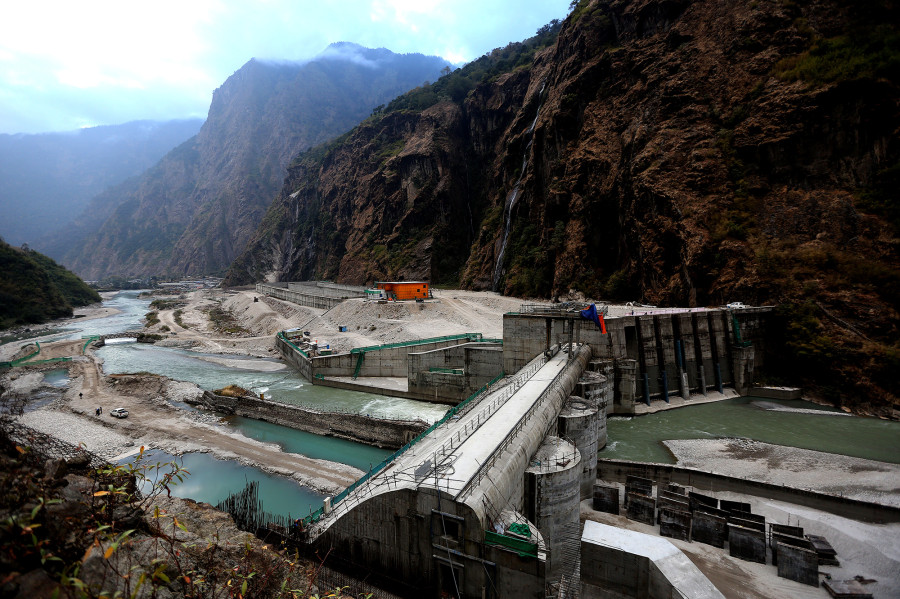Money
Hydropower plants temporarily halt output as floods wreak havoc across Nepal
The loss in output was offset by electricity imports from India.
Post Report
Hydropower plants temporarily halted the release of nearly 500 MW of electricity to the grid on Friday to prevent flood damage to the infrastructure, resulting in power cuts in some parts of the country, the Nepal Electricity Authority said.
On Friday, heavy downpours triggered floods and multiple landslides in different parts of the country.
Kulman Ghising, managing director for Nepal Electricity Authority, said that 250 MW of electricity generation from plants operated by private producers and 240 MW by the power utility was halted on Friday temporarily. This translates to around 40 percent of the country’s total electricity output.
“It’s not due to the infrastructure being damaged. We had to stop power generation to release the water as floodwater may deposit sediment that can result in the channel filling with debris which puts the ground on which the dam stands in danger,” he said. “The deficit was met by importing power from India,” he said.
“Powerhouses and systems were brought back into operation after the water receded.”
The country's peak electricity demand hovers around 1200 MW.
The 144 MW Kali Gandaki hydropower stations, 70 MW Middle Marsyangdi and 16 MW Trishuli including other plants of Nepal Electricity Authority were closed for power generation.
Similarly, incessant rain affected the Kabeli Corridor Transmission Line, the backbone of the power grid in the eastern region that extends across Jhapa, Ilam, Panchthar, Tehrathum and Taplejung, halting the generation of 170 MW electricity produced by various small private producers.
According to the power utility, the water level in the 144 MW Kali Gandaki hydropower stations has risen dramatically and it’s not sure when the power generation will resume.
“The transmission line also suffered damage in several places that caused the power output to reduce,” said Ghising. “Technicians have been deployed to fix the power line.”
Nepal’s electricity output is slated to double in the next fiscal year 2020-21 with the addition of 983 MW. The country’s current energy generation is 1,027 MW.
According to the Nepal Electricity Authority, 23 projects, including the 456 MW Upper Tamakoshi, are on track to come into operation by the next fiscal year. The Upper Tamakoshi is expected to come online by November and will fulfil Nepal’s energy requirement during the dry season.
This fiscal year, 18 privately funded hydropower projects are scheduled to roar into life. However, the Covid-19 pandemic has pushed back the operation date of many projects as their construction equipment has been stranded due to the restriction in transportation across the world.
This energy will come from the 60 MW Upper Trishuli 3A, 14 MW Kulekhani-3 and 22 MW Bagmati Hydroelectric and other projects. Three projects have already entered the testing phase.




 11.12°C Kathmandu
11.12°C Kathmandu












%20(1).jpg&w=300&height=200)
